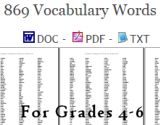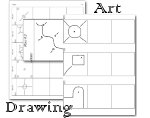Step One: Subjects
Updated March 14, 2023,
Donna Young
The first step is very easy and perhaps you already know what subjects your child will study in homeschool. You should check your state laws to find out what sort of subjects they require (if any).
Sample Subject Lists of Basic Subjects
The sample lists do not include everything that could possibly be added.The sample lists below are not set in stone and every subject that could be on the lists is not included.
Please add or take away from them, but always include Math, Language Arts, Social Studies (history), and Science. The arts, religious studies, and state history are not mentioned in the sample lists and those subjects would be examples of subjects that could be added.
Two final points about the Lists
![]() For the sake of clarity, Language Arts classes are in italic and instead of using the word "language arts", which you can absolutely use in your subject list, I have listed the parts of language arts.
For the sake of clarity, Language Arts classes are in italic and instead of using the word "language arts", which you can absolutely use in your subject list, I have listed the parts of language arts.
![]() For the sake of your sanity and because this is true, I will tell you which subjects ****do not have to be done every school day. Those subjects are displayed in green.
For the sake of your sanity and because this is true, I will tell you which subjects ****do not have to be done every school day. Those subjects are displayed in green.
K
Phonics/Learn to Read
Handwriting
Math
Social Studies
***Science/Health
1st & 2nd
Phonics/Reading
Handwriting
* English
Spelling
Math
Social Studies
***Science/Health
3rd Grade
** Reading
* English
Spelling
Handwriting
Math
History/Geography
***Science/Health
4th & 5th
*** Reading
* English
Spelling
Handwriting
Math
History/Geography
***Science/Health
PE
* English would include grade level composition, grammar, and communication skills.
** Reading would not only include reading all sorts of books, but reading would also include vocabulary and "critical conditioning," [and now you are wondering, "What is critical conditioning?"] Open a search engine and look up Kathryn Stout's book on the topic, Critical Conditioning
***Science and Health are often the same class in the lower grades.
****Subjects that do not have to be done every school day: I marked those classes with the color green. My recommendation does not indicate how often to do the classes; that part is up to you, the homeschool planner/parent.
Grades 6th, 7th, and 8th
The course of study for grades 6, 7, and 8 is like the course of study for 4th and 5th grades, however, handwriting can be dropped if the student is doing well with his penmanship, but please continue to keep an eye on your child's handwriting. Spelling, as defined as a mere "list of words" rather than vocabulary, is also optional after grade 6. If your child needs to continue studying spelling, do so and I recommend Natural Speller. Reading, as a class name, should take on the class name of Literature, and the student should continue studying critical reading, comprehension, and vocabulary. Class frequency in science should increase unless you are already having science 3+ times a week. Math is everyday as usual.
The high school course of study is discussed in the High School section of donnayoung.org.
Now that you have looked at the sample lists- Make the Lists
What subjects will your child take this year, probably the usual, right? This part is not hard. If you haven't already, make your list of subjects. You can write your lists on my forms or write the list in a notebook or in your word processor. I usually make mine on a course of study form because making a course of study is step number three.
![]()
![]() Course of Study free printable
This course of study form is the same printable file shown in Step Three.
Course of Study free printable
This course of study form is the same printable file shown in Step Three.
Goals
Make Goals
This step is optional, but consider making goals either at this stage or a few weeks into homeschool. Goals can, at first, be like standards and copied from a standards lists. But more importantly and eventually, the goals should come the parts of a subject of which your child needs improvement. The more you homeschool, the easier this will be. See in the following link this example of a goal planner with a mix of ordinary goals and personalized goals. In the example, the first box that contains this goal, "Improve handwriting and proofreading skills" is a personalized goal. Example of a filled goal planner.
Goals Form
![]()
![]() Classic Goals Form
Classic Goals Form
Use for one subject per printed page.
Decide what your child should study and make a list. Trips to the library can be more fruitful with your goals list in hand and you will have a guide when you get forgetful.
Goals can be made for short and for long periods of time. The goals can be for things other than academics, such as character goals.
If you aim for nothing then nothing is what you will usually get.
Donna Young
![]()
![]()




 Acrobat PDF
Acrobat PDF  I've added 20 new addition and 20 new multiplication drill sheets.
I've added 20 new addition and 20 new multiplication drill sheets. Drawing a Grid in One-Point Perspective
Drawing a Grid in One-Point Perspective Donna added an English index
Donna added an English index 


